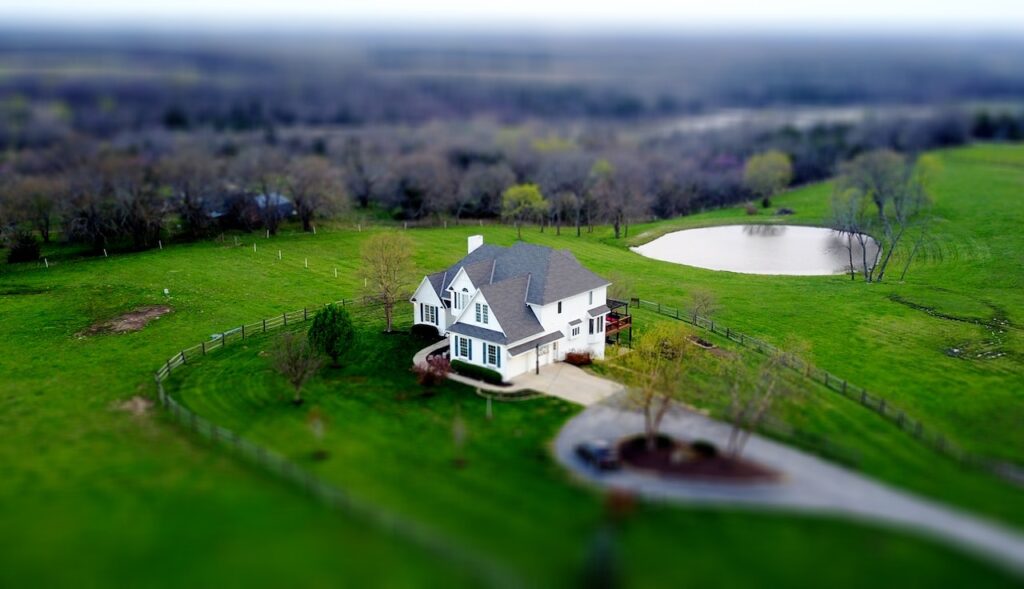The USDA Could Be the Solution.
Home affordability in the U.S. is the lowest it’s been since 1984.
For context, that year, Karate Kid was a box office hit, Prince’s Purple Rain was atop the charts and a Russian computer programmer created Tetris.
The Detroit Tigers were World Series champions and haven’t won 100 games in a season since.
And Liechtenstein became the last European country to grant women the right to vote. Correlation is not causation, but the nation now boasts a 100% literacy rate.
A lot’s changed since 1984. But one thing remains the same …
The Housing Market Sucks
The widely accepted standard for budgeting for housing is the 30% rule, meaning no more than 30% of your income should go to paying your rent or mortgage.
Ten years ago, the payment-to-income ratio was 17.1%. In July 2023, it’s ballooned to 38%.
By another measure, we’re equally f****d.
As its name suggests, the home-price-to-income ratio juxtaposes average housing costs against average earnings in the U.S. Historically, the average cost of a home in America has been ~5x median household income.
But like grandparents lament, things aren’t what they used to be. Sticking with 10-year intervals, here are the home-price-to-income ratios over the past 50 years:
- 1973: 3.63
- 1983: 4.14
- 1993: 4.37
- 2003: 5.52
- 2013: 5.07
- 2023: 7.75
Meaning to afford a home in America today, it’ll cost you 7.75x the average salary … more than at the peak of the housing bubble.
So if you plan on telling anyone to just “pull themselves up by their bootstraps,” I hope you’re well-versed in a martial art or live in a stand-your-ground state.
Because it now requires at least a $65k salary to comfortably afford a $288k home. The problem with that is twofold:
- The median U.S. salary is just $59k.
- The median U.S. home price is now $410k.
And with interest rates the highest they’ve been since 2002 and home prices near record highs, it’s increasingly difficult for households to save a 20% down payment.
Silver Lining
There aren’t many things we can say that’ll pacify would-be homebuyers who’ve been forced to put their plans on hold.
If it’s any consolation … what goes up must come down.
The Federal Reserve’s enacted a historically aggressive series of rate hikes to combat inflation.
But there’ve been rumblings among Fed officials that cuts could come in late-2024/early-2025 until the effective federal funds rate reaches 2.5% for the long term.
That’s largely contingent on inflation further subsiding, unemployment rising (which the Fed hopes will slow consumer spending, thereby driving down prices) and the 2024 election not resulting in Civil War 2.0.
But for those that cannot wait for potential interest rate reductions, there’s another option besides getting locked into an 8% 30-year mortgage and forking over a 20% down payment of $82k to avoid private mortgage insurance (PMI) charges.
USDA: Not Just Agriculture
The Department of Agriculture is tasked with developing and executing federal laws pertinent to farming, forestry, rural economic development and food.
What many people don’t know is that — as part of its rural economic development initiative — the USDA provides single family housing programs, including direct and guaranteed home loans.
Specifically, Single Family Housing Direct Loans and the Single Family Housing Guaranteed Loan Program:
- The former is offered directly by the department to low or very-low income households and typically involve 33-year terms with payment assistance available.
- The latter is offered by approved lenders to moderate income earners (i.e., the majority of Americans) with 30-year fixed rates, which can be refinanced when interest rates fall.
Both programs allow you to purchase a home with NO money down, and unlike an FHA loan for first-time homebuyers, there’s no PMI added to your monthly payment. Borrowers are responsible for a one-time 1% “upfront fee” and an annual fee of 0.35% of the loan amount.
There are some other conditions. The property must be your primary residence and, importantly, it must be located in a “rural area.”
Rural ≠ Boondocks
When people hear the word “rural,” their minds often jump to movies like Deliverance. While that certainly can be true, it’s not always the case.
The USDA defines rural locations as those with populations under 35k. It doesn’t matter if it’s as remote as Fremont County, Wyoming, or a stone’s throw from Manhattan. If there are fewer than 35k inhabitants, it qualifies.
And that’s critical because places like Fremont County aren’t bustling with jobs. Americans typically need to commute to urban and suburban commerce centers for gainful employment.
So here are some examples of how close you can get to a major metro area while still maintaining eligibility for USDA rural development home loans:
- Clarkdale, Georgia
Population: 23,401
Distance/time to Atlanta: 19 miles/35 minutes
- Chester, Pennsylvania
Population: 32,535
Distance/time to Philadelphia: 18 miles/26minutes
- Whites Creek, Tennessee
Population: 4,412
Distance/time to Nashville: 11.6 miles/19 minutes
- Barton Creek, Texas
Population: 2,395
Distance/time to Austin: 10 miles/24 minutes
It takes longer than any of those commutes for a Los Angeleno to drive five miles from Hollywood to Dodger Stadium.
TL;DR
Home affordability in the U.S. is the lowest since 1984. Interest rates and house prices remain near historic highs. If you can’t wait for rates to fall, USDA rural development loans require no money down and can provide a solution to qualifying homebuyers.


One Response